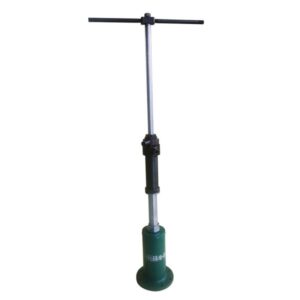Tracking the right metrics during a software development project is critical to ensure success, meet deadlines, and deliver quality products. Without monitoring key indicators, projects risk falling behind schedule, exceeding budgets, or producing software that does not meet expectations. Innerworks understands the importance of data-driven decision making, and by focusing on the key metrics to track during a software development project, teams can gain clear insights into their progress and performance.
Understanding the Importance of Tracking Metrics in Software Development Projects
Metrics offer transparency and visibility into every phase of a software development project. Innerworks emphasises that tracking these metrics allows project managers and development teams to identify bottlenecks early, manage resources efficiently, and maintain high quality throughout. By relying on accurate metrics, Innerworks ensures projects stay aligned with business goals and client expectations, avoiding costly overruns and scope creep.
Key Metrics to Track During a Software Development Project
Velocity
Velocity measures the amount of work completed by a development team during a sprint or iteration. Innerworks uses velocity to assess how quickly a team can deliver features or fixes, which helps in forecasting timelines for upcoming sprints. Tracking velocity regularly allows teams to adjust workloads and priorities, making it a vital metric in Agile and Scrum project management.
Sprint Burndown Chart
The sprint burndown chart tracks the remaining work in a sprint and shows progress on a daily basis. Innerworks utilises this chart to monitor whether the team is on track to complete all planned tasks within the sprint. It helps identify scope creep or unexpected delays early, enabling swift course correction to keep the project moving smoothly.
Code Quality Metrics
Maintaining high code quality is essential to reduce bugs and technical debt. Innerworks tracks several code quality metrics such as code coverage (the percentage of code tested by automated tests), cyclomatic complexity (which measures code complexity), and code churn (the amount of code modified). Using automated tools, Innerworks continuously monitors these metrics to maintain clean, maintainable codebases.
Defect Density
Defect density indicates the number of defects found relative to the size of the software module. Innerworks calculates this metric to gauge software stability and identify problematic areas that need attention. By focusing on defect density, Innerworks can prioritise bug fixes and improve testing processes, which leads to more reliable software releases.
Lead Time & Cycle Time
Lead time measures the total time taken from the initial request to delivery, while cycle time tracks the duration of actual work on a task. Innerworks carefully tracks both metrics to evaluate how efficiently the development process flows. Reducing lead and cycle times helps accelerate delivery without sacrificing quality, which is a core focus of Innerworks’ project management approach.
Team Satisfaction and Productivity Metrics
Innerworks recognises that a motivated and satisfied team is crucial to project success. Metrics that assess team satisfaction, such as regular surveys or feedback sessions, help gauge morale and identify potential issues. Productivity metrics also monitor output while ensuring the team is not overworked, helping maintain a sustainable pace that leads to consistent, high-quality results.
Tools and Techniques for Tracking Software Development Metrics
Innerworks integrates best-in-class tools such as Jira for project tracking, GitLab for version control, and SonarQube for code quality analysis. These tools offer real-time dashboards and automated reports that provide Innerworks’ teams with instant insights into project health. The seamless integration of tools allows Innerworks to streamline metric tracking, reducing manual effort and improving accuracy.
Best Practices for Using Metrics Effectively
Tracking metrics is only useful when the data informs decisions. Innerworks emphasises focusing on a manageable set of actionable metrics rather than overwhelming the team with data. Regular review meetings at Innerworks ensure the whole team stays aligned on project goals and uses metrics to guide improvements. Furthermore, Innerworks aligns metric tracking with stakeholder priorities to deliver maximum business value.
Takeaway
Focusing on the key metrics to track during a software development project is essential to delivering successful outcomes. Innerworks consistently applies these principles to maintain transparency, efficiency, and quality across all projects. By adopting these metrics and following best practices, development teams can reduce risks, meet deadlines, and produce software that truly satisfies users and stakeholders. Innerworks invites you to implement these metrics in your next project to experience better control and superior results.








